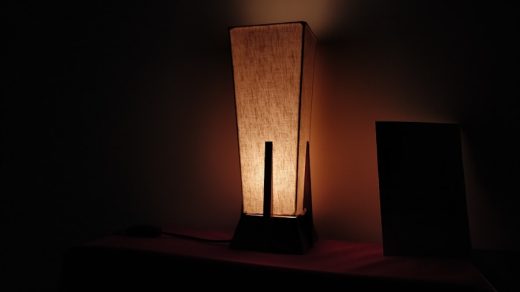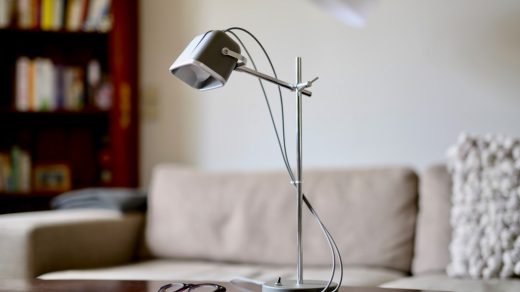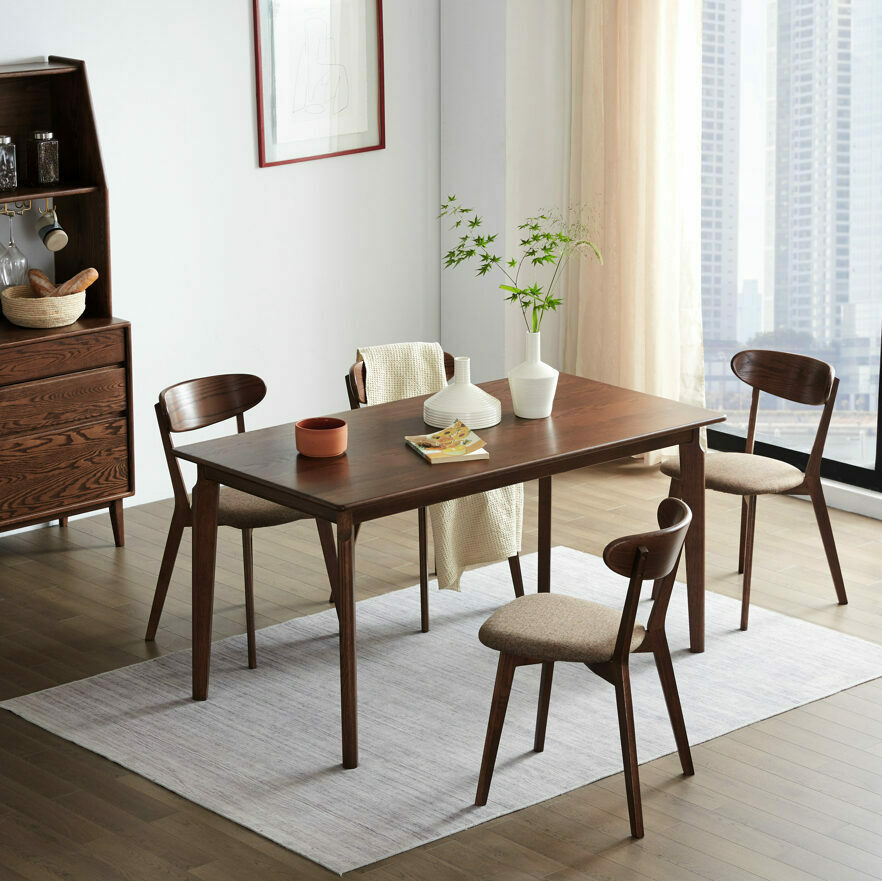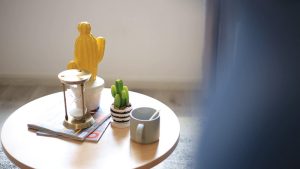Nordic design, also known as Scandinavian design, originated in the Nordic countries of Denmark, Finland, Iceland, Norway, and Sweden in the early 20th century. It is characterized by its simplicity, functionality, and use of natural materials. The design style emerged as a response to the industrial revolution and the desire for a more practical and accessible approach to design.
Nordic design focuses on clean lines, minimalism, and a sense of calm and tranquility. It embraces simplicity and aims to create spaces that are both functional and aesthetically pleasing. Natural materials such as wood, leather, and wool are often used to bring warmth and texture to the space.
Benefits of a simple fabric sofa
A simple fabric sofa is a versatile and adaptable piece of furniture that can easily fit into different decor styles. Whether you have a minimalist Nordic-inspired home or a more eclectic space, a simple fabric sofa can be styled to suit your taste. Its clean lines and neutral color make it a timeless piece that can be easily updated with accessories and accents.
Comfort and durability are also important factors when choosing a sofa. A simple fabric sofa offers both. The soft fabric upholstery provides a cozy seating experience, while the sturdy frame ensures durability and longevity. It is important to invest in a high-quality fabric sofa that will withstand everyday use and maintain its shape over time.
Easy maintenance and cleaning are additional benefits of a simple fabric sofa. Most fabric sofas come with removable covers that can be easily washed or replaced. This makes it convenient to keep your sofa looking fresh and clean. Regular vacuuming and spot cleaning can help maintain the appearance of your fabric sofa.
Choosing the right fabric for your sofa
When choosing the right fabric for your sofa, there are several factors to consider: durability, texture, color, and pattern. Durability is especially important if you have children or pets, as the sofa will be subjected to more wear and tear. Look for fabrics that are stain-resistant and easy to clean.
Texture is another important consideration. Nordic design often incorporates natural textures such as linen, wool, and cotton. These fabrics add depth and visual interest to the space. Consider the feel of the fabric as well – you want something soft and comfortable to sit on.
Color and pattern play a crucial role in Nordic-inspired homes. Neutral colors such as white, gray, and beige are commonly used to create a calm and serene atmosphere. However, pops of color can be introduced through accessories and accents. When it comes to patterns, simple geometric designs or subtle stripes are popular choices.
Color palettes for a cozy Nordic-inspired home
Color palettes in Nordic-inspired homes tend to be neutral and earthy tones. These colors create a sense of calm and tranquility, which is a key characteristic of Nordic design. White walls and light-colored furniture provide a blank canvas for adding pops of color through accessories and accents.
While neutral colors dominate the space, it is important to introduce contrast and depth through different shades and tones. For example, pairing light gray walls with dark gray furniture creates a sophisticated and balanced look. Similarly, combining warm beige tones with cool blue accents adds visual interest to the space.
Natural light is also an important element in Nordic design. Large windows and minimal window treatments allow natural light to flood the space, creating a bright and airy atmosphere. This natural light enhances the colors in the space and adds warmth to the overall design.
Adding texture and layers to your space
Texture is an essential element in Nordic design as it adds depth and visual interest to the space. One way to incorporate texture is by layering rugs, throws, and pillows. A plush rug can add warmth and comfort to a room, while a cozy throw draped over the sofa creates a sense of coziness.
Mixing different textures and materials is another way to add visual interest to your space. For example, pairing a leather sofa with a chunky knit throw creates a contrast in textures that is visually appealing. Similarly, combining smooth surfaces with rough textures, such as a wooden coffee table with a woven basket, adds dimension to the space.
Creating depth and dimension in your decor is important in Nordic design. This can be achieved by layering different elements such as artwork, mirrors, and plants. Hanging artwork at different heights and using mirrors to reflect light can create the illusion of a larger space. Adding plants and greenery brings life and freshness to the space.
Accessorizing with natural materials and textures

Incorporating natural materials and textures is a key aspect of Nordic design. Wood, stone, and metal accents are commonly used to add warmth and visual interest to the space. Whether it’s a wooden coffee table, a stone fireplace surround, or metal light fixtures, these natural materials bring a sense of nature indoors.
Plants and greenery are also important accessories in Nordic-inspired homes. They not only add visual interest but also improve air quality and create a sense of calm and tranquility. Incorporating plants in different sizes and shapes can create a dynamic and lively atmosphere.
Sustainability and eco-friendliness are also important considerations in Nordic design. Choosing furniture made from sustainable materials or opting for vintage or second-hand pieces is encouraged. This not only reduces waste but also adds character and uniqueness to your space.
Creating a warm and inviting atmosphere
Creating a warm and inviting atmosphere is essential in Nordic design. Lighting plays a crucial role in setting the mood and ambiance of the space. Soft, warm lighting creates a cozy atmosphere, while bright, natural light enhances the colors and textures in the room.
Cozy and comfortable seating arrangements are also important in creating an inviting atmosphere. Placing your fabric sofa in a central location and arranging additional seating around it encourages conversation and interaction. Adding plush cushions and throws to your sofa creates a cozy and inviting seating area.
Personal touches and sentimental items are another way to create a warm and inviting atmosphere. Displaying family photos, artwork, or cherished mementos adds a personal touch to your space. These items tell a story and make your home feel more welcoming and lived-in.
Incorporating Scandinavian design elements into your decor
Minimalism and simplicity are key elements of Scandinavian design. The focus is on decluttering and creating a clean and organized space. This can be achieved by choosing furniture with clean lines and minimal ornamentation. Opt for pieces that serve a purpose and have a practical function.
Functionality and practicality are also important aspects of Scandinavian design. Furniture should be designed with the user in mind, providing comfort and convenience. Multi-functional pieces, such as a sofa bed or storage ottoman, are popular choices in Nordic-inspired homes.
Hygge, a Danish concept that translates to coziness, is another important element of Scandinavian design. It is about creating a warm and inviting atmosphere that promotes well-being and contentment. This can be achieved through the use of soft lighting, comfortable seating, and cozy textiles.
Combining simplicity and functionality in your furniture choices
Combining simplicity and functionality in your furniture choices is key to achieving the Nordic design aesthetic. Multi-functional pieces are especially useful in smaller spaces where maximizing functionality is important. For example, a sofa bed can serve as both seating during the day and a bed for guests at night.
Space-saving solutions are also important in Nordic design. Opting for furniture with built-in storage or choosing pieces that can be easily folded or stacked when not in use helps to maximize space. This is especially useful in smaller apartments or homes where space is limited.
Quality over quantity is another important principle in Nordic design. Investing in high-quality furniture that will last for years is more important than buying cheap, disposable pieces. Quality furniture not only looks better but also withstands everyday use and maintains its shape and functionality over time.
Tips for maintaining and caring for your fabric sofa
Regular cleaning and maintenance are important to keep your fabric sofa looking its best. Vacuuming your sofa regularly helps to remove dust and dirt that can accumulate on the surface. This prevents the fabric from becoming dull or discolored.
Protecting your fabric sofa from spills and stains is also important. Applying a fabric protector spray can help repel liquids and prevent them from seeping into the fabric. It is also important to address spills and stains immediately by blotting them with a clean cloth and using a mild detergent if necessary.
Professional cleaning and restoration options are available for more stubborn stains or deep cleaning needs. It is recommended to have your fabric sofa professionally cleaned every 1-2 years to maintain its appearance and prolong its lifespan. Professional cleaners have the expertise and equipment to effectively remove stains and restore the fabric to its original condition.
Conclusion:
Nordic design is a timeless and versatile style that embraces simplicity, functionality, and natural materials. A simple fabric sofa is a key piece of furniture in Nordic-inspired homes, offering versatility, comfort, and easy maintenance. When choosing the right fabric for your sofa, consider factors such as durability, texture, color, and pattern.
Color palettes in Nordic-inspired homes tend to be neutral and earthy tones, with pops of color introduced through accessories and accents. Adding texture and layers to your space creates depth and visual interest. Accessorizing with natural materials and textures brings warmth and life to your space.
Creating a warm and inviting atmosphere is essential in Nordic design, achieved through lighting, comfortable seating arrangements, and personal touches. Incorporating Scandinavian design elements such as minimalism, functionality, and hygge adds authenticity to your decor. Combining simplicity and functionality in your furniture choices, as well as maintaining and caring for your fabric sofa, ensures that your Nordic-inspired home remains beautiful and inviting for years to come.




